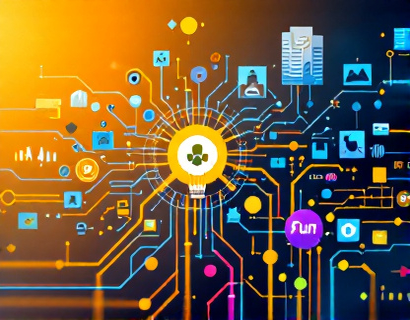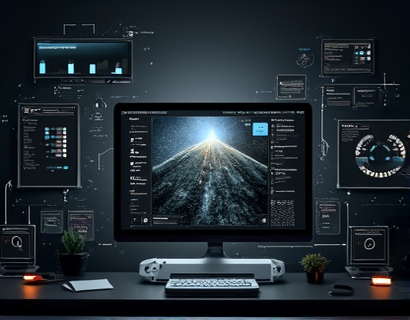Master Multi-Account Login Security: A Next-Gen Solution for Enhanced Online Protection and Convenience
In the digital age, managing multiple online accounts has become an everyday task for tech-savvy individuals. Each platform, from social media to banking, requires unique credentials, leading to a complex web of logins that can be both cumbersome and risky. The challenge lies in maintaining robust security while ensuring convenience and ease of access. This article delves into a cutting-edge software solution designed to address these concerns, offering a seamless and secure way to manage multiple logins across various platforms.
The need for advanced login management solutions has never been more critical. With the increasing number of cyber threats and the growing reliance on online services, individuals must prioritize both security and convenience. Traditional methods of managing logins, such as writing them down or using weak password managers, pose significant risks. A next-gen solution must therefore provide a balance between stringent security measures and user-friendly accessibility.
Understanding the Risks of Multiple Logins
Managing multiple logins manually is fraught with risks. Reusing passwords across different sites is a common practice but a major security flaw. If one account is compromised, all others using the same password become vulnerable. Additionally, remembering complex, unique passwords for each account is challenging, leading many to opt for simpler, less secure options. This dual challenge of security and convenience is where innovative login management software steps in, offering a robust yet easy-to-use solution.
Key Features of a Next-Gen Login Manager
A state-of-the-art login management tool should encompass several key features to ensure both security and convenience. First and foremost, it must employ strong encryption methods to protect stored credentials. End-to-end encryption ensures that even if the data is intercepted, it remains unreadable and secure. This encryption should be applied both in transit and at rest, providing comprehensive protection.
Another crucial feature is multi-factor authentication (MFA). MFA adds an extra layer of security by requiring users to provide two or more verification factors to gain access. This could include something the user knows (like a password), something they have (like a smartphone), or something they are (like a fingerprint). Implementing MFA significantly reduces the risk of unauthorized access, even if credentials are compromised.
User-friendly interfaces are also essential. The software should offer an intuitive dashboard where users can easily view, add, and manage all their accounts in one place. This includes features like password generators, secure storage for notes and documents, and the ability to generate and manage unique, complex passwords for each account. The interface should be clean, responsive, and accessible across various devices, ensuring a seamless user experience.
Enhanced Security Protocols
Security protocols form the backbone of any reliable login management solution. Advanced algorithms and cryptographic techniques must be employed to safeguard user data. Regular security audits and updates are necessary to stay ahead of emerging threats. The software should also include features like session monitoring and alert systems, which notify users of suspicious activities or login attempts from unfamiliar devices.
Furthermore, the solution should support secure sharing options for trusted contacts, allowing users to grant temporary access without compromising long-term security. This feature is particularly useful for scenarios like remote work, where team members may need temporary access to shared resources.
Convenience Without Compromising Security
While security is paramount, convenience cannot be overlooked. A next-gen login manager should streamline the login process, eliminating the need to remember multiple passwords. Autofill capabilities can pre-populate login fields, saving time and reducing the risk of errors. Additionally, the software should support one-click logging into multiple accounts, providing a seamless transition between platforms.
For users who frequently switch between devices, synchronization across all connected devices is essential. This ensures that any changes, such as updating a password or adding a new account, are reflected across all devices in real-time. Cloud-based storage with offline access further enhances convenience, allowing users to manage their logins even without an internet connection.
Integration and Compatibility
Compatibility with a wide range of platforms and services is another critical aspect. The software should support major web browsers, operating systems, and popular online services, ensuring a broad user base can benefit from its features. Integration with popular productivity tools and applications can also enhance its utility, allowing users to manage their logins alongside other important data and tasks.
API support is vital for developers and power users who want to integrate the login manager with custom applications or automate specific workflows. This flexibility ensures that the solution can adapt to various user needs and technological environments.
User Control and Privacy
In an era where data privacy is a major concern, user control over personal information is non-negotiable. The login manager should provide transparent privacy policies and give users granular control over their data. Users should be able to choose what information is stored, how it is used, and who can access it. The option to export or delete accounts and related data should be readily available, empowering users to manage their digital footprint effectively.
Compliance with international privacy standards, such as GDPR, is essential. This ensures that the software adheres to strict data protection regulations, further building user trust. Regular audits and third-party certifications can demonstrate a commitment to privacy and security.
Scalability and Future-Proofing
As the digital landscape evolves, a reliable login manager must be scalable and future-proof. This means supporting emerging technologies and protocols, such as biometric authentication and decentralized identity solutions. The software should be designed with modularity in mind, allowing for easy updates and the addition of new features without disrupting existing functionality.
Cloud-based infrastructure with robust infrastructure as a service (IaaS) components ensures that the solution can handle growing user bases and increasing data volumes. Load balancing, auto-scaling, and high availability are key to maintaining performance and reliability, even during peak usage periods.
Real-World Applications and Use Cases
The benefits of a next-gen login management solution extend across various scenarios. For remote workers, it simplifies access to company resources and applications from different locations and devices. In the educational sector, students and faculty can securely manage access to multiple learning platforms and databases. E-commerce businesses can leverage the solution to streamline customer account management and enhance security for online transactions.
In the healthcare industry, where patient data security is critical, such a solution can help manage access to electronic health records and other sensitive information. For individuals managing multiple personal and professional accounts, it provides a centralized and secure way to handle all their online identities.
Conclusion
In conclusion, a state-of-the-art login management solution offers a powerful combination of security and convenience, addressing the complex needs of tech-savvy individuals. By employing advanced encryption, multi-factor authentication, and user-friendly features, such software ensures that credentials are both safe and easily accessible. As cyber threats continue to evolve, staying ahead with a robust and adaptable login manager is essential for maintaining online safety and peace of mind.










































